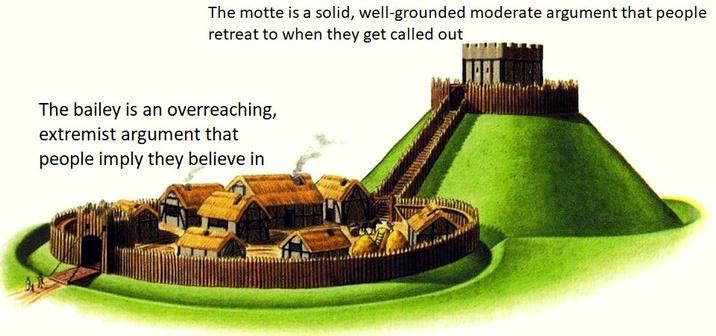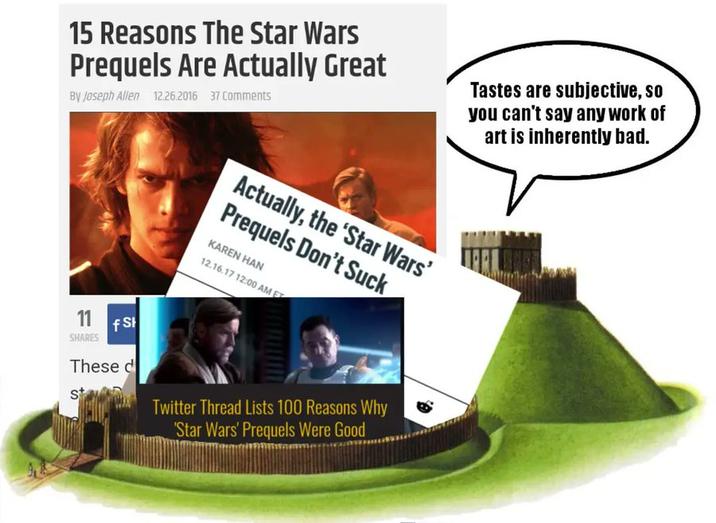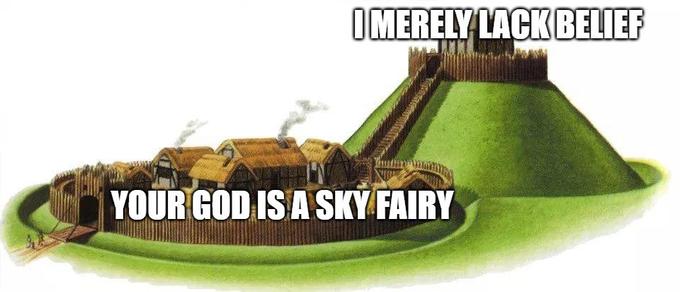About
Motte and Bailey Fallacy or Motte-and-Bailey Fallacy, also known as a Motte-and-Bailey Argument, refers to a type of arguing in which a person uses two differing concepts or ideas that seem similar on the surface but are not the same. The “motte” in the name represents a modest, easily defensible and generally uncontroversial claim. By contrast, the “bailey” represents a more ambitious, controversial and difficult-to-defend claim. In practice, a speaker typically advances the bailey but, when challenged, retreats to the motte, which is less contentious. This maneuver creates the appearance that the original, more controversial claim has been upheld, even though the defense has shifted to a different, less disputable proposition. Though the concept has been around since it was first discussed by philosopher Nicholas Shackel in 2005, the motte-and-bailey fallacy began seeing use in memes in early 2019 as an exploitable image macro meme that’s usually depicted as an illustration of the medieval castle with captions added to the motte and bailey and their corresponding claims.
Origin
The motte-and-bailey fallacy, coined from a kind of medieval castle of the same name, was originally conceptualized by philosopher Nicholas Shackel in his 2005 paper “The Vacuity of Postmodernist Methodology.” In this paper, Shackel compared the way of arguing to the motte-and-bailey castle’s defensive strategy.
In a traditional motte-and-bailey castle, the “motte” refers to a fortified stone tower or keep constructed on an elevated mound, while the bailey designates the surrounding enclosed courtyard or land area and sometimes a town. In the event of an attack, inhabitants would then withdraw from the bailey to the motte, which was more defensible due to its elevation and better fortifications. In the rhetorical fallacy known as the motte-and-bailey, a proponent of a controversial or difficult-to-defend position retreats to a simpler, less contentious claim when their primary argument is challenged.
As a meme format, the earliest example of the motte-and-bailey illustration being used as an image macro was posted by X / Twitter user @Noahpinion on February 26th, 2019. In his tweet, Noah provided the blank template comprised of the illustration, as well as an explainer on how to use it and an example meme. The post received over 2,200 likes, 590 retweets and 90 replies in six years.

Spread
The motte-and-bailey fallacy as a meme format continued to spread into the 2020s, most commonly using the original illustration and format posted by X user @Noahpinion in early 2019.
For instance, on April 14th, 2022, Redditor BoneyHutt posted a version discussing gender theory to the /r/PoliticalCompassMemes subreddit using the format, receiving over 1,100 upvotes and 270 comments in roughly three years.

On January 8th, 2023, a since-deleted Redditor posted another variant to the /r/PoliticalCompassMemes subreddit about bodyshaming and fat people, receiving over 1,100 upvotes and 150 comments in three years.

On April 6th, 2023, Redditor TheCybersmith posted a version to /r/PoliticalCompassMemes using a different illustration of a motte-and-bailey castle discussing Antifa, which garnered nearly 200 upvotes and 40 comments in two years.

Various Examples




Template

